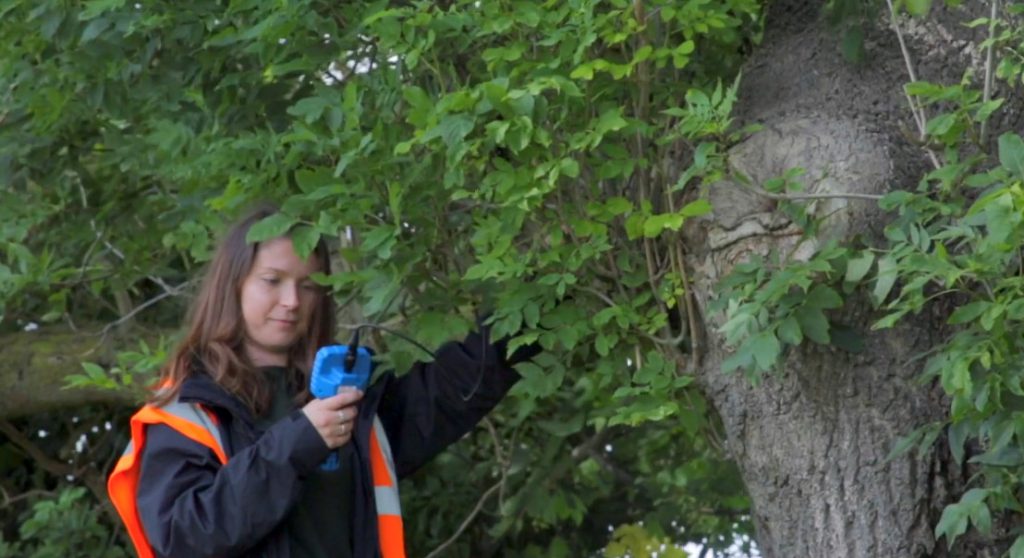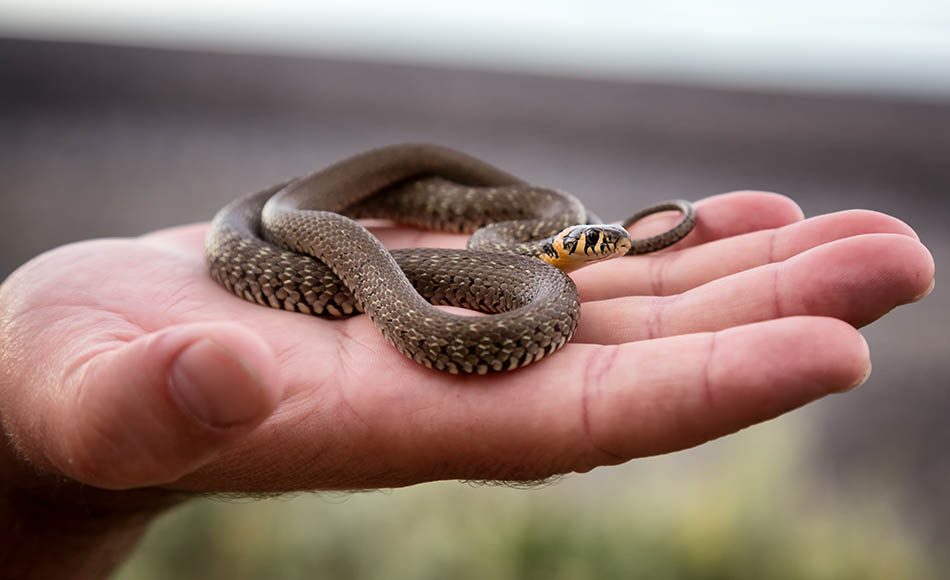Everything You Need to Know About Reptile Surveys
In the UK, there are six native species of reptile, including four common reptile species that are protected by law from being deliberately killed, injured or sold. Applicable reptiles include the adder (vipera berus), common lizard (zootoca vivipara), grass snake (natrix natrix) and slow worm (anguis fragilis), and they are protected under the Wildlife and Countryside Act 1981 and the Conservation of Habitats and Species Regulations 2017.
The two remaining reptile species out of the six present in the country – the sand lizard (lacerta agilis) and the smooth snake (coronella austriaca) – are considered much rarer and feature within the list of protected species under the European Directive and the UK’s Habitats Regulations 2017, limiting your ability to disturb them or their habitat.
Over the last decade, the numbers of native reptiles have continuously fallen, caused by human activity removing their habitats. More specifically, land and property developments where reptiles are present have been the primary cause. By breaking any of the laws that protect reptiles, you are running the risk of penalties, such as fines up to £5,000 per offence or prison sentences of up to six months.

The rarity surrounding sand lizards and smooth snakes comes from lacking extensive ranges across the British Isles, instead limited almost exclusively to areas around the south coast.
Both the smooth snake and sand lizard need specific habitat types, including sand dunes and heathland.
If either species of snake is identified on a development site, you will almost certainly require a European Protected Species Licence (EPSL) to move them.
As well as assessments for reptiles, we are experienced in dealing with the necessary licences. For the other four reptile species, such as the slow worm, the restrictions aren’t as strict and it isn’t as difficult to achieve a successful planning application.
Reptile Surveys
Consisting of two fundamental phases, a reptile survey is primarily designed to uncover suitable habitats, confirm the likely presence of reptiles and determine present species and population size. Assessments can take place in a number of settings to match the behaviours of reptiles, including sand dunes, brownfield sites and greenfield sites, and rough grassland, heathland, moorland and woodland.
Scoping / Phase 1 Reptile Surveys
A scoping reptile survey is a fairly straightforward assessment and simply involves one of our ecologists visiting your site and checking whether or not it is a suitable habitat for reptiles. As scoping surveys for native reptile species primarily focus on identifying and judging the quality of reptile habitats, they can be conducted at different times throughout the year.
In a visit to the site, an ecologist will identify habitats that are of particular ecological importance and check the habitat to determine how suitable it is for supporting reptiles. The phase 1 survey will also integrate a desk study, including an exercise in checking local record centres for any evidence of protected species identified on the site or in the surrounding area.
Phase 2 Reptile Surveys
Under certain circumstances, you may be asked by your local planning authority for a further survey known as a phase 2 reptile survey. Unlike the preliminary assessment, the phase 2 can only be undertaken at certain times of the year. Although the optimal reptile survey season takes place during April, May and September, assessments are dictated by reptile activity level and suitable weather conditions, making them more flexible than surveys on other European protected species.
The primary task in phase 2 reptile surveys involves the ecologist placing down reptile felts for any present reptiles to use as shelter from predators and control their temperature. A form of artificial refuges (artificial refugia), reptile mats used for this exercise may be bitumen, carpet tiles, tin or roofing felt, with the ecologist positioning them in a grid-like pattern throughout the site and logging their locations using a GPOS handheld device. Over a further seven or eight visits to the site, the ecologist will record and photograph anything found beneath the reptile mats.
Reptile Survey Report
Following the site visit, an ecology report will be created to display survey data from the assessment. If common reptiles are found on the site during the survey, the ecologist will make this clear to the local planning authorities within the report, producing a form of method statement to assist the developer, enable the project to move forwards and contribute to successful planning applications.
Mitigation measures within the report deal with how reptiles will be contained or excluded from the site during the period of being most at risk based on the development proposals, such as during demolition or construction work. Compensation measures may also be applicable if the development requires for habitats to be destroyed and replaced with new habitats inside or outside of the site.
An ecologist will usually conduct effective habitat management by carrying out hand searches of any good quality habitats on the site and physically moving any reptiles to a safe pre-identified site prior to your site workers clearing the area. Long-term solutions may also include creating suitable habitats elsewhere or putting up reptile fencing to prevent them from returning.
Reptile Survey Methodology
Guaranteeing consistency and a high standard of service to clients appears as a pivotal factor in all of our services. Components that contribute to these outcomes include our own specialised approach and the resources we use for additional guidance and support.
For further insight into how Arbtech‘s team of experienced ecologists conduct protected species surveys for both common species and rare reptiles, check out the section below.
Reptile Survey Guidelines
Adherence to multiple guidelines ensures that our surveys and assessments are carried out correctly and with optimal effectiveness. UK legislation plays a major role in dictating how we undertake ecological inspections, particularly legal protection over reptiles as stated in the Conservation of Habitats and Species Regulations 2017 and the Wildlife and Countryside Act 1981 as amended.
Both acts provide full protection for the adder, common lizard, grass snake and slow worm, and the Wildlife and Countryside Act 1981 also applies to the rare species of reptile such as the smooth snake and sand lizard. Unlike adders, common lizards, grass snakes and slow worms, however, the two rarer species hold further legal protection from the Habitats Regulations 2017.
In an effort to remain up to date with the latest updates about reptile surveys and individual reptiles such as the six native species in the UK, we keep tabs on updates from relevant regulators, such as Natural England and Natural Resources Wales. Likewise, our ties to public bodies Natural England and Natural Resources Wales benefit applications for a mitigation licence in England and Wales.
Reptile Survey Mitigation
At any point that basking animals such as reptiles are identified on a development site, a mitigation strategy will need to be initiated to avoid reckless killing, injuring or in any way endangering the reptiles found. A mitigation hierarchy will be used, with the priority outcome involving leaving reptiles in their existing habitat. For instance, if it is possible to prevent harm to any of the six native reptiles by altering the development and avoiding areas with reptile habitats present or by changing when construction staff can undertake the development works, that would be the preferred outcome.
Alternatively, if this is not possible and the many reptiles on the site cannot retain their current location, the ecologist would be left with no choice but to move them to a new habitat or artificial refugia. At this point, the ecologist will carefully consider the suitable habitat, with thought put into ensuring that it is the same or better size and quality as the original habitat, as close to the development area as possible, and safe from future development.
Getting Started
Rather than leave potential ecology surveys as a last resort, get in touch today and eliminate any likely issues in your project from appearing unexpectedly. To take the first step, speak to us by calling us on the number above or by filling out our online quote form. Our team will then gather some general information about the address of the property and the specifications of your project, and once we have assessed your details, we will provide you with a free quote for you to look over.
Within the quote, everything will be written simply and without any obscure lingo. If you are happy to proceed based on the quote, let us know and we will work in collaboration with you to choose a suitable date for the survey. One of our experienced ecologists will then attend your site for the assessment, determine whether reptiles are present and move on to capturing reptiles and relocating them if it is required for your project and to satisfy the local authorities.
How Much is a Reptile Survey?
Before booking a survey with us, it is only natural that you will want to know the reptile survey cost. Our prices are calculated based on the specifications of the property and the project. By operating in this way, we can minimise costs for our clients, offering prices as close to the baseline rather than charging the same for a large project as we would for a small one.
As far as cost goes for our reptile surveys, the price for a phase 1 survey starts from just £399. Due to the more comprehensive nature of the phase 2 survey – particularly the fact that multiple visits to the site are needed, leading to the need for extensive hours and the involvement of more than one ecologist – the price starts from £1899.
Why Use Arbtech for Your Reptile Survey?
Choosing the right ecological consultancy is important, as it will eliminate any risk of a poor service or unnecessary delays. Arbtech has been providing a wide range of arboricultural and ecological surveys to clients all over the UK for more than 15 years. In that time, we have built a reputation for a quick and effective high-quality service, as proven in our client reviews.
Registered in England and Wales to undertake the necessary surveys, our sufficiently educated, trained, licensed and experienced ecologists are situated throughout the country to satisfy the needs of current and future clients. We can also offer a wide range of ecology assessments to support you across your entire project, including a Preliminary Ecological Appraisal (PEA), Ecological Walkover Survey, Biodiversity Net Gain Assessment, protected species surveys and many more.




